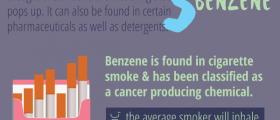
Radon is a chemical element in a gassy form, with the symbol Rn and atomic number 86. This gas is colorless, odorless, tasteless and thus hard to notice. On the other hand, radon is a radioactive substance that occurs naturally as a side product of the radium decay. This way, radon is a serious threat to humans’ health.
Health Effects of Radon
Exposure to high levels of the radon increases the risk of developing lung cancer. Being exposed to this gas in the open air isn’t that dangerous because the amount of radon in the open space is reasonably low and benign. However, limited spaces like basements and the inside of our homes may also accumulate the radon. Exposure to this imperceptible gas is hazardous in the closed space and the prolonged contact may significantly increase the risk of lung cancers.
Radon may enter our homes by going through the small gaps in the soil or rocks upon the buildings are constructed. It enters the rooms through the cracks in the concrete, basement drains or dirty floors. Radon may sometimes enter the homes from the water from the wells. Many different factors such as location of the house and material from which it is built, may affect the probability of radon accumulation.
Measuring the Levels of Radon in the Home
Commercial services for measuring radon levels are available. Any exposure to radon is hazardous to health and carries certain risks of developing lung cancer. However, the acceptable level of radon defined by the U.S. Environmental Protection Agency is 0.4 pCi/L. Any measurement result above this level demands immediate corrective measures. Lung cancer risk rises 16% per 2.7 pCi/L increase in radon exposure, and people can affect the levels of radon in their homes by taking a number of relatively easy environment adjustments. Simple and rather inexpensive radon test is the safe way to get the information about the quality of the home environment.
Corrective measures
A three-month testing period is a confident and recommended way to estimate the average levels of radon during the whole year. The simple and inexpensive ways to improve the home environment and reduce the risks associated with high levels of radon include: Renovating basement and ground floors, sealing all of the visible cracks in the walls, floors around drains and pipes and regularly ventilating ground floors and basement rooms. Also, there are some commercial home radon solutions available. All of them work on the principle of drainage or trapping the gas before it enters the home. These methods may also be effective and may cost even less than the usual home repair.












_f_280x120.jpg)




Your thoughts on this
Loading...